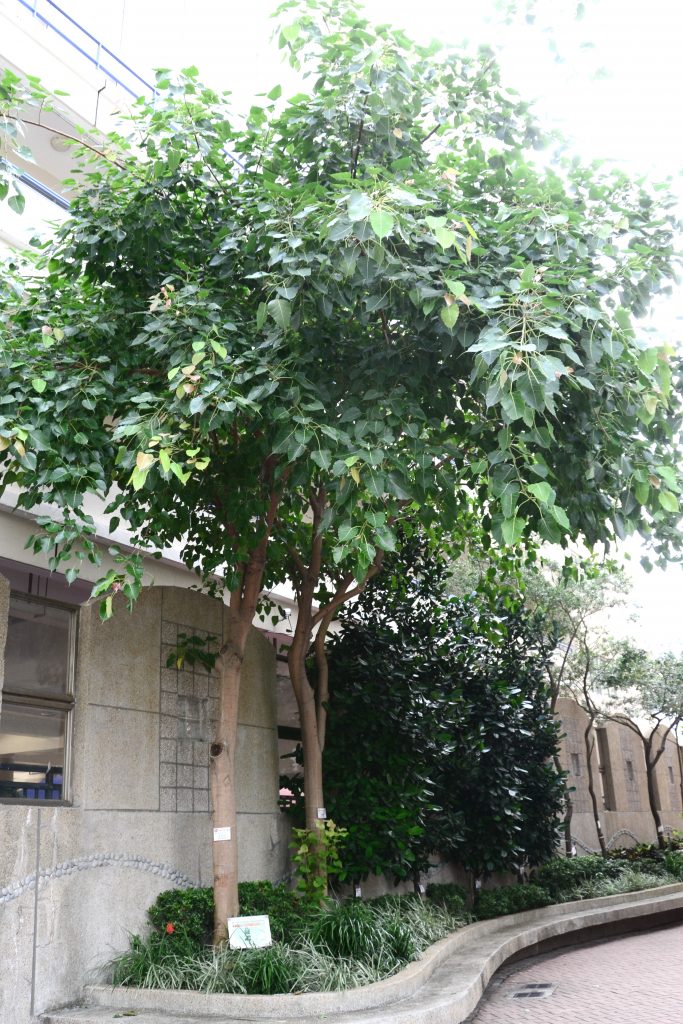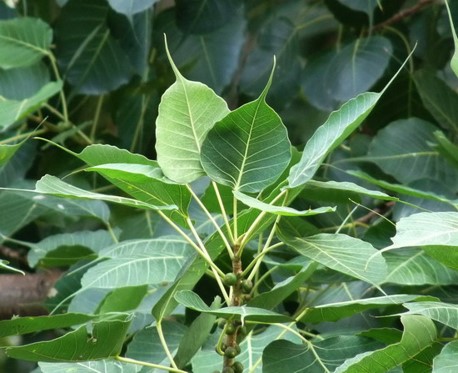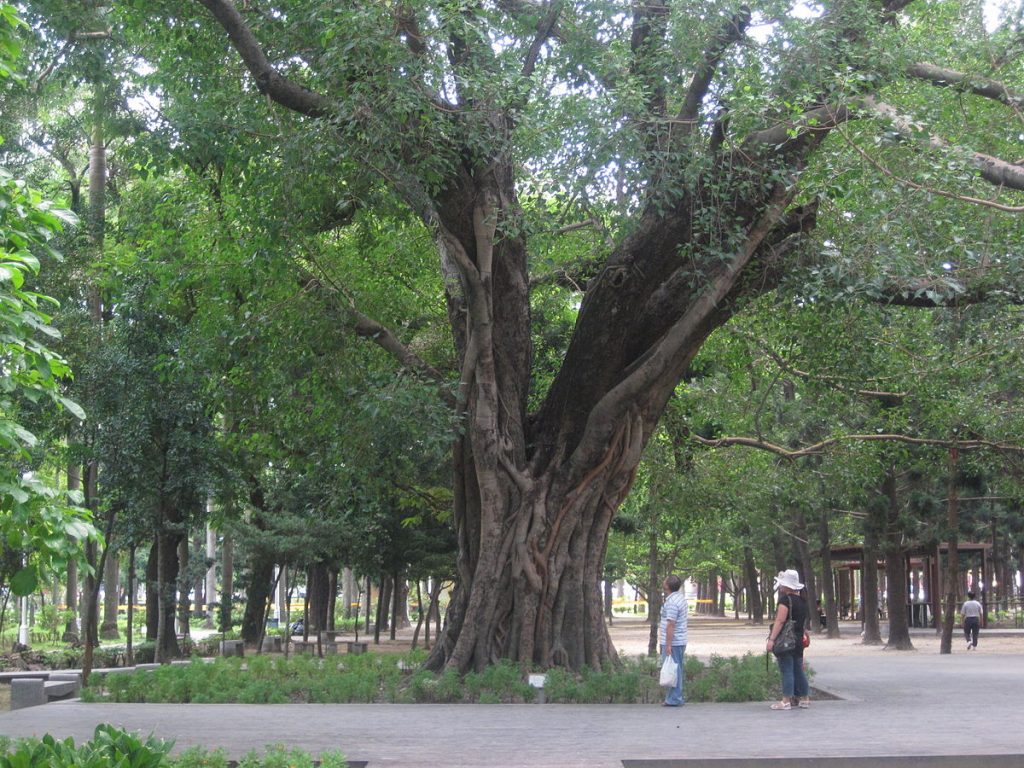Religious Significance
Ficus religiosa, commonly known as Bodhi tree or peepal tree, is a species of fig that belongs to the fig or mulberry family Moraceae. It is also known as sacred fig as it is considered sacred in Hinduism, Jainism and Buddhism. Gautama Buddha is said to have attained enlightenment while meditating underneath a sacred fig. The tree is located in present-day Bodh Gaya, Bihar, India which is one of the most important four main Buddhist pilgrimage sites. In India, the sacred figs are often planted near temples or their massive tree trunks used as sites of Buddhist shrines. Hindu Sadhus also meditate underneath this tree.

Characteristics
The sacred fig is a large, dry season-deciduous or semi-evergreen tree with a wide-spreading crown. It can grow up to 30m in height and with a trunk of diameter up to 3m. It is easily recognized by its cordate-shaped (heart-shaped) leaves with a distinctive extended drip tip. The sacred fig often starts its life as an epiphyte in the branch of cracks of a tree where its seeds, dispersed by fruit-eating birds, germinate. When the plant grows, aerial roots are sent down towards the soil which becomes thicker and more vigorous when they reach the ground. The aerial roots can grow into thick woody trunks which may become indistinguishable from the main trunk. Unlike most epiphytic figs which strangle the supporting tree by encircling their stems, roots of the sacred figs penetrate inside the stem of the supporting tree and splitting it from within. At the same time, the foliage of the sacred fig spread widely and overwhelm the crown of its supporting tree. Eventually, the supporting tree dies, leaving a hollow space within the fig.




